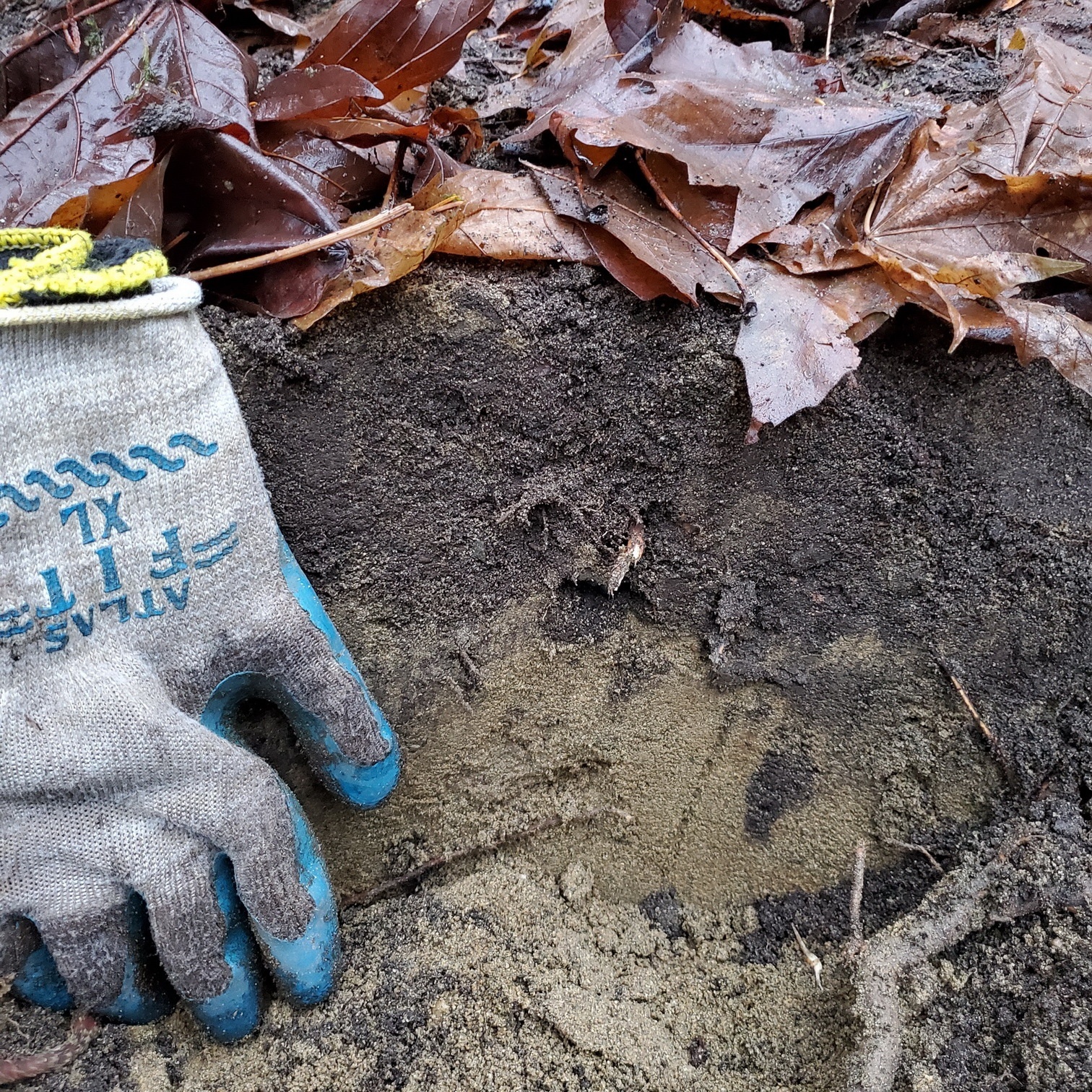Things I’ve been learning about soil recently, combined with my work in Forest Park, have caused me to re-examine some of my forest restoration practices. In short, which is more important, preserving topsoil or removing blankets of Ivy? Before, I would have said removing the Ivy, but now I’m not so sure.
What Happened?
The City was clearing out its greenhouse about a month ago, and I accepted a couple dozen Sword Ferns to plant on a ridgetop in Forest Park. While digging the holes for the ferns, I was very surprised to realize how deep the topsoil was in this area. In the picture above you can see a well-defined profile with about 4” of light-brown topsoil resting on a yellowish layer of sandy mineral subsoil. Based on what I have been used to finding in the Park, 4” is an excellent layer of topsoil. Why is the topsoil so relatively deep in this area? Three possible factors come to mind:
• The site is only gently sloping, meaning less erosion.
• The site is dominated by old Bigleaf Maples which provide an abundant stream of organic litter.
• The site was previously covered with a thick blanket of Ivy.
OMG. Have I just questioned the removal of Ivy? Does Ivy actually help preserve the topsoil by preventing erosion and adding leaf litter? Like so many other questions I have about forest restoration, I could not find authoritative answers on the internet, but here are a few quotes:
- “As a groundcover, ivy can protect topsoil from erosion, but it lacks the deeper topsoil stabilization capability of mature trees and shrubs.”
- “Shallow-rooted ivy mats on hillsides can increase risk of slope slippage.”
- “Leaf litter from English ivy is high in nitrogen, spoiling topsoil for native plants accustomed to lower nutrient soils.”
The Dilemma
The discovery of such good topsoil on this ridgetop has left me wondering. I still believe that backyard forest restoration begins with the removal of Ivy, but to what extent? It is definitely important to make the ring cuts and survival rings on Ivy growing up trees, but perhaps I need to think twice before removing Ivy blankets from some sites in order to preserve the topsoil.
What Have I decided for This Site?
On this ridgetop, the flat slope and generous tree litter will probably help preserve the topsoil over the next 10-20 years as the natives we plant become established. But there is a steep slope on one side of this ridgetop that has a blanket of Ivy which I am now less inclined to remove. Ideally, I think it should be removed gradually, in very small patches, and only as resources allow the immediate installation of a dense and diverse planting and mulching of native shrubs and trees.
In this case however, there are no resources available to buy plants, so I am going to try live-staking a bunch of shrubs before removing the blanket of Ivy. If the shrubs become established, then I will remove the Ivy. Going forward, I am going to pay more attention to preserving topsoil, even if it means having to leave a blanket of ivy on some sites.
